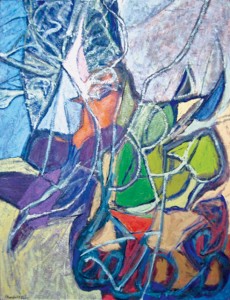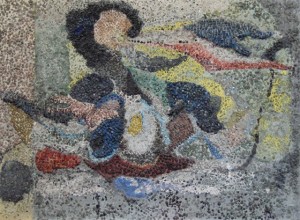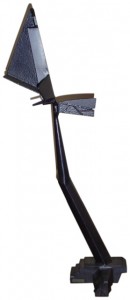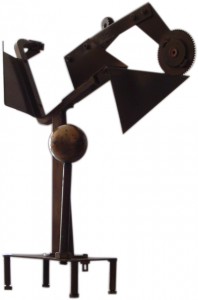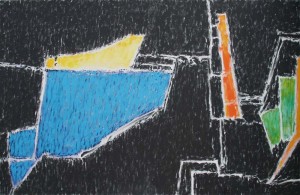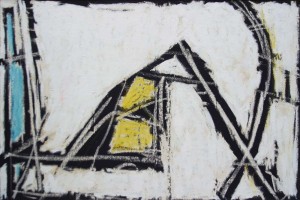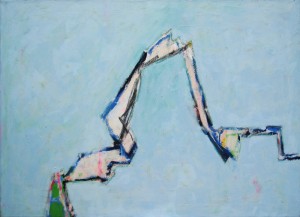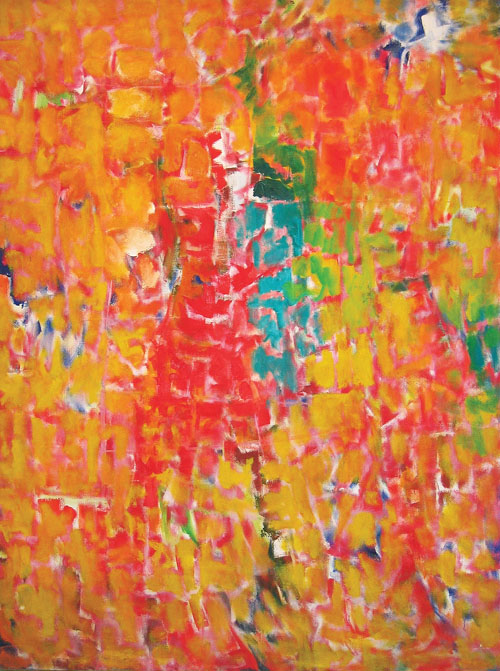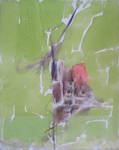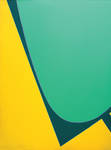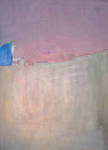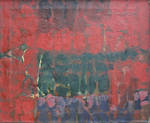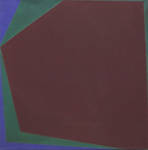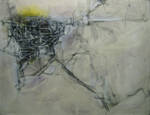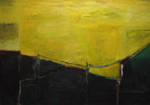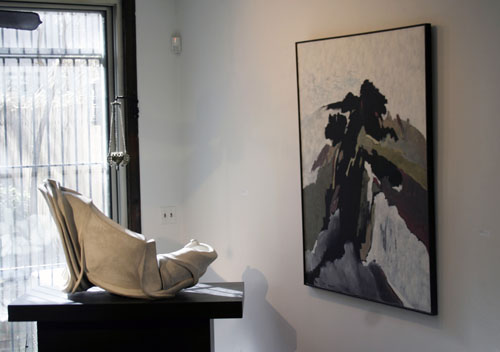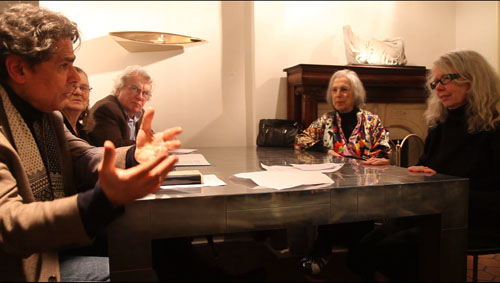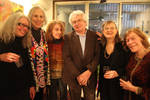TALL & Small: November 9 – February 11, 2014
In an increasingly cyber and dot.com world, Abstract Expressionism’s startlingly direct and personal way of communicating looks pretty good. This exhibition displays the use of various techniques, materials, and different artistic ideas of the second generation of abstractionists.
Seymour Boardman, Ilya Bolotowsky, Ernest Briggs, Lawrence Calcagno, Amaranth Ehrenhalt, Buffie Johnson, Albert Kotin, William Manning, Louise Nevelson, Joe Overstreet, Jeanne Reynal, Ethel Schwabacher, Nancy Steinson, Yvonne Thomas, and Wilfrid Zogbaum.
Seymour Boardman‘s work reduced complicated image to its essence through a simple play with basic color planes while the original background, color lines pierce, bend and twist the negative space. Ilya Bolotowsky’s visually ordered works reveal the influence of Piet Mondrian’s geometry. Ernest Briggs’s non-representational compositions of pure and emotional colors explode with inviting gesture to emerge in their powerful intimate world. Lawrence Calcagno with the use of linear brush strokes created meditative and colorful landscapes. Amaranth Ehrenhalt, an ‘action painter’, presents us with dynamic, colorful and playful works. Buffie Johnson represented existentialist work among Abstract Expressionists; her cosmic-like paintings convey her belief in the cycle of life with its eternal returns. Al Kotin’s phantasmagoric combination of color initiates an illusion of slowly rotating motion. William Manning’s pieces unfold in a way that is reminiscent of the Cubists ideas about fragmented vision. Louise Nevelson’s signature is a complex arrangements of abstract shapes enclosed in boxes. Joe Overstreet integrates painting with sculptural space using meaning-laden materials that reference both painting and the human condition. Jeanne Reynal through her “direct method” adapted the luminosity of ancient mosaics into abstract mosaic compositions. Ethel Schwabacher’s paintings combine automatism, introduced to her by Arshile Gorky, with abstract forms, referring to nature. Nancy Steinson’s sculptures add to the richness of the exhibition. Yvonne Thomas is best conveyed through a play of muted brushstrokes that transgress the substantiality of matter. Wilfrid Zogbaum’s dynamic steel structures bear a kinship to primordial ancestors.




